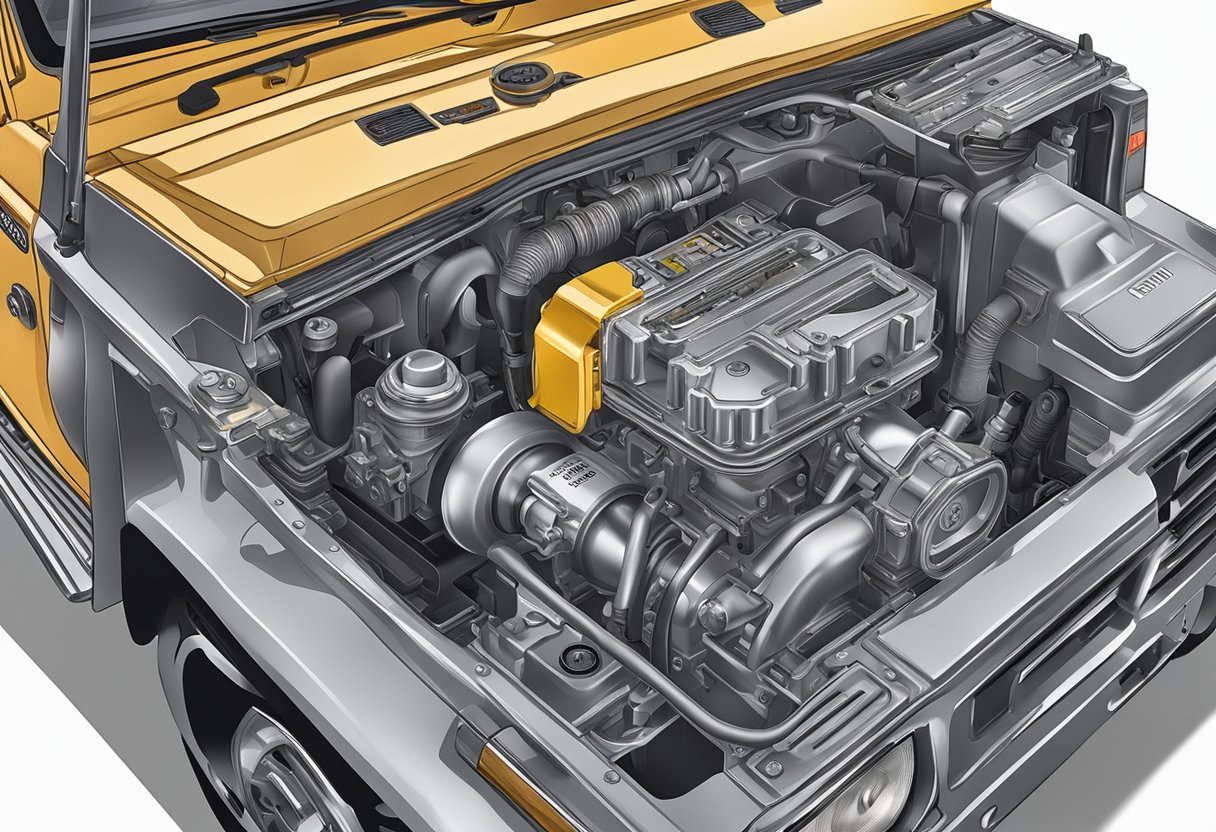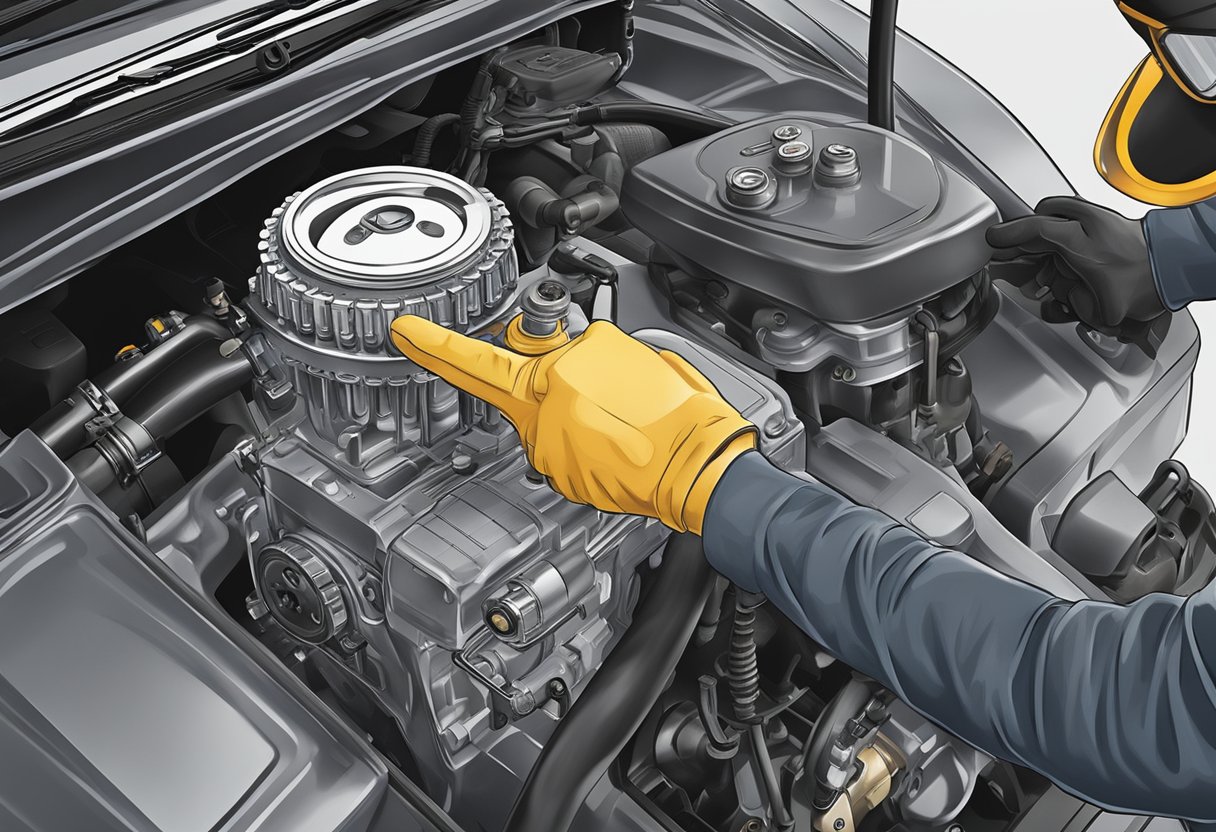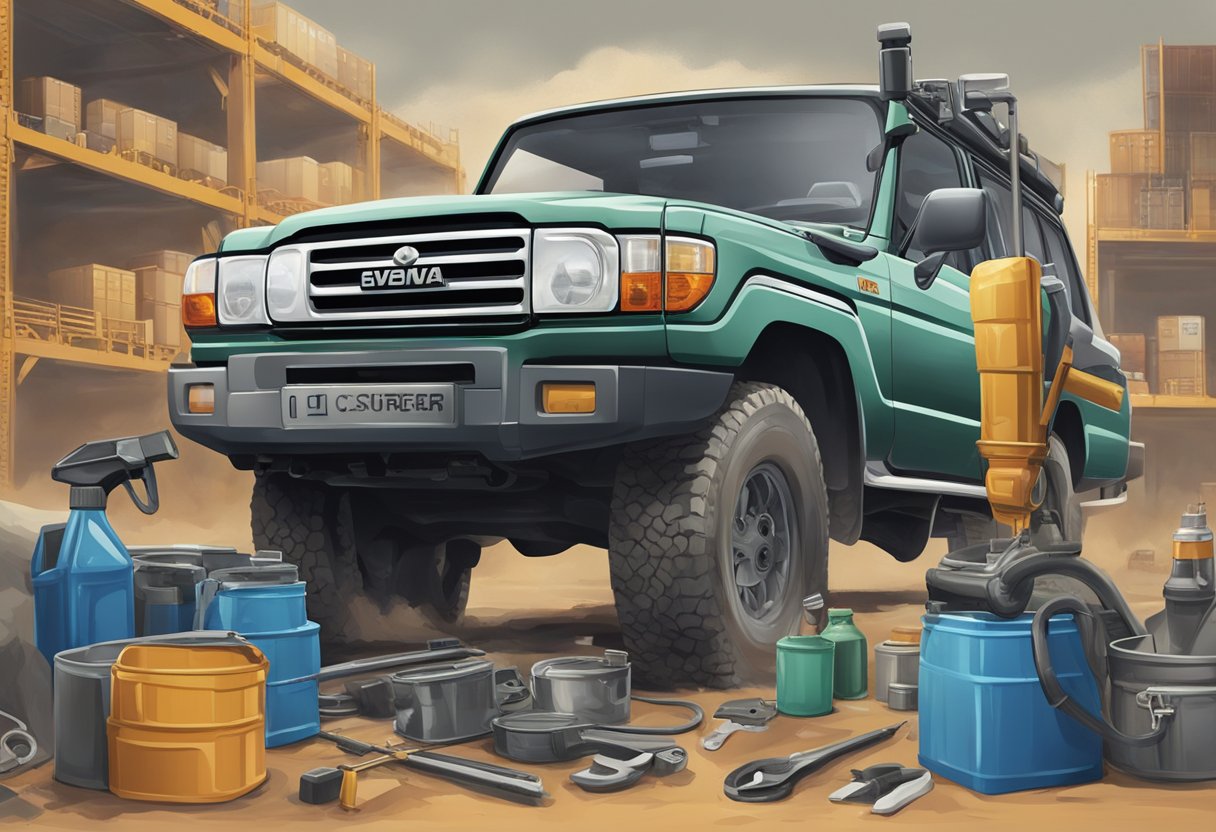*This post may contain affiliate links. As an Amazon Associate we earn from qualifying purchases.
Maintaining a Toyota Land Cruiser involves a bit more than just kicking tires and slamming doors; it requires paying close attention to the needs of its gearbox, particularly when it comes to oil capacity. Gearbox oil isn’t just any old fluid; it’s the lifeblood that keeps things moving smoothly under the bonnet. For manual gearbox aficionados, knowing the oil capacity of their Land Cruiser is like knowing exactly how much coffee it takes to start their morning engines—absolutely essential.

The manual gearbox in a Toyota Land Cruiser is not a fan of surprises, especially when it comes to its oil. Whether you’re driving the classic 70 series or navigating the city streets in a newer model, the right oil quantity ensures a suave operation. Imagine the gearbox is like that particular friend who knows exactly how much ketchup he wants on his fries—not a drop more, not a drop less. To avoid the mechanical equivalent of a ketchup catastrophe, it’s vital to consult the handbook for the correct oil type and capacity, and stick to the original oil recommendations to ensure your differential gears aren’t left high and dry.
Key Takeaways
- Proper gearbox oil maintenance is pivotal for a smooth Land Cruiser driving experience.
- Each Land Cruiser model has a specific manual gearbox oil capacity you should adhere to.
- Consult the vehicle’s handbook and use the recommended oil to maintain gearbox health.
Understanding Your Gearbox’s Thirst

Selecting the right oil for a Land Cruiser’s manual gearbox isn’t just about quenching its thirst – it’s about keeping that metal mosh pit cool and lubricated. They say knowledge is power, and in this case, it’s also what keeps your gears shifting smoothly.
Deciphering Oil Specifications
When it’s about manual transmission oil, one must think of it as the lifeblood of their gearbox. For the Toyota Land Cruiser, specifically, their gearboxes have quite the palate:
- SAE 75W or 80W: This is the viscosity your gearbox craves, especially in colder temperatures where a thinner oil is needed.
- GL4 vs GL5: These are the API service categories, with the GL indicating they are gears lubes. GL4 lubricants are less aggressive towards copper-type alloys, while GL5 provides better protection and is suited for hypoid gears.
For better clarity, here’s a gearbox oil cheat sheet:
| Specification | Application | Note |
|---|---|---|
| SAE 75W | Lighter viscosity for cold temps | Good for a gearbox that wakes up on the wrong side of bed |
| SAE 80W | Slightly thicker than 75W | For those “in-between” weather days |
| GL4 | Less copper-alloy aggression | Like a gentle librarian handling ancient manuscripts |
| GL5 | Extra protection | The bouncer outside a nightclub of gear teeth |
Manual vs Automatic Showdown
For those who prefer the art of the manual transmission, synthetic oil such as fully synthetic or 75W-90 is a fantastic choice. They support smooth shifts and tend to be more generous on the internals than their mineral counterparts. Fancy oils, huh?
- Fully Synthetic: Like the elixir of the gearbox gods, providing excellent protection.
- Viscosity Choices: Like choosing between skim or whole milk for your breakfast cereal, either 75W-90 or 80W will do.
Its rival, the automatic transmission, uses a different type of oil entirely, so it’s crucial not to invite the wrong guest to the party. Automatic fluids are like the life coach for smooth transitions without any manual effort, but where’s the fun in that?
So remember, treating one’s gearbox to a quality synthetic with the correct viscosity and API classification is not just maintenance, it’s an expression of love for your vehicle. And who doesn’t want their car to feel loved?
The Great Oil Quest

In the land of Land Cruisers, the quest for the optimal manual gearbox oil capacity is more than a mere maintenance check—it’s an adventure ripe with mechanical intrigue and oily undertakings.
Locating the Treasure: Drain and Refill Points
Ah, the storied journey to the underbelly of the Land Cruiser! Here lies the fabled drain plug, a guardian of the sump, standing vigil against unwanted grime. This noble bolt will willingly yield its post when coaxed by a wrench, allowing the aged lubricant to escape into its retirement vessel. Once the old oil has retreated, adventurers will court favor with the refill plug, found higher up on the gearbox cast, eager for the fresh, viscous nectar.
Key Locations:
- Drain Plug: Underneath the gearbox, a socket’s turn away.
- Refill Plug: On the gearbox’s side, a beacon for new oil.
Their roles are simple yet vital, for without them, the Land Cruiser’s lifeblood cannot be renewed, and the quest would surely fail.
Checking Levels: A Dipstick Adventure
Even the most seasoned adventurer needs a map, but in this case, it’s a certain dipstick that leads them to the Land Cruiser’s well-lubricated treasure. They must ensure that not a drop less or more than the sacred measure is bestowed upon the gearbox, lest they face the dreadful curse of inadequate lubrication—too little, and they risk the wrath of friction; too much, and they provoke the specter of leaks.
Steps to Enlightenment:
- Withdraw the dipstick with a flourish.
- Wipe it clean, observing the oil’s color and texture—foreshadowing the health of the gearbox.
- Reinsert the dipstick, then remove once more to reveal the true oil level.
Any discrepancies must be rectified, for they chronicle the gearbox’s tales of engine power, cooling adequacy, gasket integrity, and seal steadfastness. Let them never be overlooked, for these markers are the signs that guide one along the winding paths of proper maintenance.
Throughout the quest, the hero must also pay homage to the omnipotent transfer case, provider of power to all corners of the Cruiser kingdom. For the uninitiated, heed the wise teachings of the service tome: the transfer case, too, requires its own sacred lubricant ritual.
In completing the Great Oil Quest, adventurers bestow upon their Land Cruiser the gifts of longevity and vitality, striking down the misfortunes of wear and ensuring many more miles of stalwart exploration.
A Gallant Blend for Different Differentials

When dealing with the legendary Land Cruisers, one mustn’t forget that each differential cries out for its own special potion. Like a sommelier pairing wine with cheese, selecting the precise lubricant for front and rear differentials is key to a harmonious drive.
Front Differential Blend
For the illustrious front differentials of the Land Cruiser models URJ200 and VDJ200, including those powered by the mighty 1VD-FTV engine, a particular hypoid gear oil is required. This isn’t just any oil; it must be the elixir that encapsulates the necessary EP additives to cater to those precious yellow metals:
- SAE 75W-90: Ideal for operational serenity.
- API GL-5: With EP additives, here to save the day for yellow metals.
Rear Differential Mixology
The rear differential, a component of distinction, often houses an LSD (limited slip differential), which demands an oil with the right frictional properties. Whether it’s the GRJ200 or the URJ202, treating the rear diff to the right concoction is crucial:
- SAE 80W-90 Standard: For the straightforward differential without LSD.
- Specialty LS Fluids: For those elusive LSD-equipped units, a potion to keep the TB at bay.
The rear units also appreciate this attention to detail, ensuring gear changes as smooth as a butler’s demeanor. Selecting the right oil isn’t just necessary, it’s a rite of passage for every noble Land Cruiser steward.
Frequently Asked Fluid Questions

In the realm of Land Cruiser maintenance, two liquid-related conundrums have enthusiasts spilling more beans than a clumsy barista: what type of gearbox oil to use and the dilemma of flushing it.
Synthetic or Dinosaur Juice: The Eternal Debate
They say dinosaurs are gone, but their essence lingers in the “dinosaur juice” or the conventional 80/90 gear oil that for ages has lubricated the guts of the Land Cruiser’s manual gearbox. On the other flank, fully synthetic oil, akin to an elixir from futuristic sci-fi, promises longer life and better performance. It’s like choosing between a classic vinyl record and a digital download; both have their merits, but one definitely doesn’t need a needle.
- Fully Synthetic Oil: Slipperier than a politician in an election year, this oil boasts molecular uniformity and high-tech additives.
- 80/90 Gear Oil: Old reliable, like that one uncle who can fix anything with duct tape, offers tried-and-tested lubrication.
To Flush or Not to Flush
To purge or not to purge the gearbox, that is the question. In the vast automotive theater, flushing is akin to giving the gearbox a juice cleanse. But is it necessary? Some say a flush removes contaminants worthy of a seven-season reality show; others argue it might unstuck particles better left undisturbed, like awakening a sleeping toddler on a plane.
Fluid Rituals:
- Transfer Box: If it could speak, it’d say, “Change my fluid every 60,000 miles, or I’ll make it rough on you!”
- Power Steering: Sweet nectar for seamless steering, needing a top-up with ATF Dexron-II.
- Fuel Tank: Prefers premium (RON 95) but won’t complain about regular unleaded – it’s not a fuel snob.
- API Grades: Notice those letters on the oil can? GL-3, GL-4, GL-5? They’re like the Michelin stars for oils, indicating their anti-wear capabilities for gearboxes.
And remember, whether you choose the juice of dinosaurs or a modern concoction, make sure it’s the grade your trusty steed prefers. Concerning flushing, consider the age and service history of your gearbox – it might just tip the scales.
